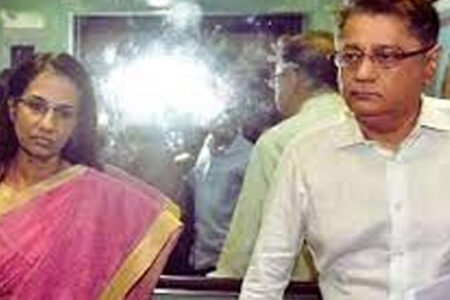BOOK REVIEW : “Pandemonium: The Great Indian Banking Tragedy”
M S Sriram
Tamal Bandyopadhyay is no stranger to the financial press. He is a respected journalist who has a blend of two attributes — a sharp mind and an intellect that can understand the layers of the Indian banking sector and an uncanny ability to draw out information and response from a wide range of people. He has two more attributes — an ability to put complex matters in language that is accessible and a riveting narrative technique of a fiction writer. He also has an open mind and does not appear to be ideologically driven — we neither find him leaning towards the State nor the Market, but pick the situation and unpeel it for us.
Mr Bandyopadhyay’s books till now have largely been on a smaller canvas, but filled with detail. The book on Sahara was rich in detail, much of it based on primary research, but talked about one firm and wove the context around the institution. He has had three books that have been biographies of financial institutions — HDFC Bank and Bandhan and one book containing his columns, arranged thematically. The current book is a break from the pattern that Mr Bandyopadhyay could have fallen into — as a biographer of institutions. This moves him to a very large canvas. He neither adopts the language of the past books, nor is he boxed in by the word limit of columns. In his journey, I think this book stands out as a milestone and a departure from how he tackles a book.
It is public knowledge that the Indian banking is going through an unprecedented crisis. This crisis is also contextualised in the larger economic crisis, some man-made and some an act of god. While we get to know this episodically, through newspaper reports, events, columns and writings of scholars, it is not often that we get to see the big picture with all the connections opened up and analysed.
The story possibly starts in 1994 where the Indian banking system went for a fundamental change from the business-as-usual framework.
Mr Bandyopadhyay does go back to the era with his interviews, but he sets his book in a slightly more contemporary world of the past decade and a half, and much more in the years following the global financial crisis of 2008. In doing so, he is able to check all the connections and interconnections of the banking system — the policy; the schism between the private sector and public sector banks; the need and the problem with shadow banking; the regulatory architecture — how it has evolved, and where it has failed; the intricate connection of the financial system with the fortunes of the economy as a whole; internal weaknesses that leads to frauds; and the contradiction of law enforcement agencies that end up constraining good banking when the frauds continue.
Pandemonium: The Great Indian Banking Tragedy
Author: Tamal Bandyopadhyay
Publisher: Roli Books
Pages: 522; Price: Rs 695
The canvas is wide and labyrinthine. This holds a mirror to several players to say how badly we have messed it up. It also shows that there has not been a comprehensive approach to the financial sector in spite of several deeply insightful reports that the policy makers have had, starting from the Narasimham committee all the way to the P J Nayak committee. The book shows how the state has been kicking the can down the road with regard to reforming public sector banks — neither going on the autonomy route, nor moving on the disinvestment route, but repeatedly using the banking system for fiscal objectives. And reinvesting instead of disinvesting.
This is why I would argue that this story should have located itself in 1994 when the policy-makers decided to make the banking system market-facing, by allowing new private banks to come up. Every time the private sector grew, the public sector instead of moving more towards markets moved towards the State. After the Narasimham committee, the only time the possibility of a structural reform arose was after the P J Nayak committee submitted its report, with Raghuram Rajan at the helm of RBI; and the National Democratic Alliance government prioritising banking reform through its Gyan Sangams and Indradhanush programmes till demonetisation hit us. That is where the dribble of the ball of political will to reform banking was passed back to the executive and the goal post was in the opposite direction.
This book leaves us deeply disturbed and depressed. We knew episodically that the banking system was slipping. With every slip, there was a bit of stability at that level and before there could be scaling, there was another slip. This gives us a perspective on how all these small slippery slopes have made the banking system sink. The only hope is that this book gives a wake-up call for urgent and deep structural reforms in the financial sector. Not piecemeal but comprehensive.
Mr Bandyopadhyay’s book is like browsing on a large website and clicking episodic hyperlinks. Every chapter opens up a new story and then a backstory. It leaves us in a wonderland of ruins. The weakest link in the book is the last section on the way forward. I am not sure given the mess that he has unfolded in front of us, anybody would have an effective strategy on the way forward. That is the great Indian banking tragedy….
The reviewer is faculty member, Centre for Public Policy, Indian Institute of Management, Bangalore. mssriram@pm.me.



